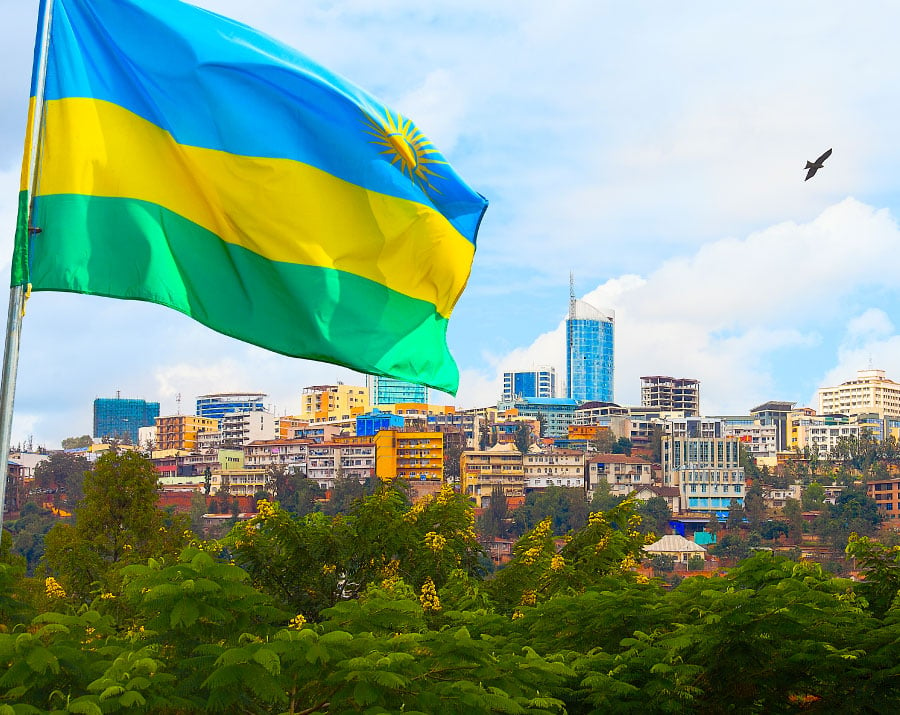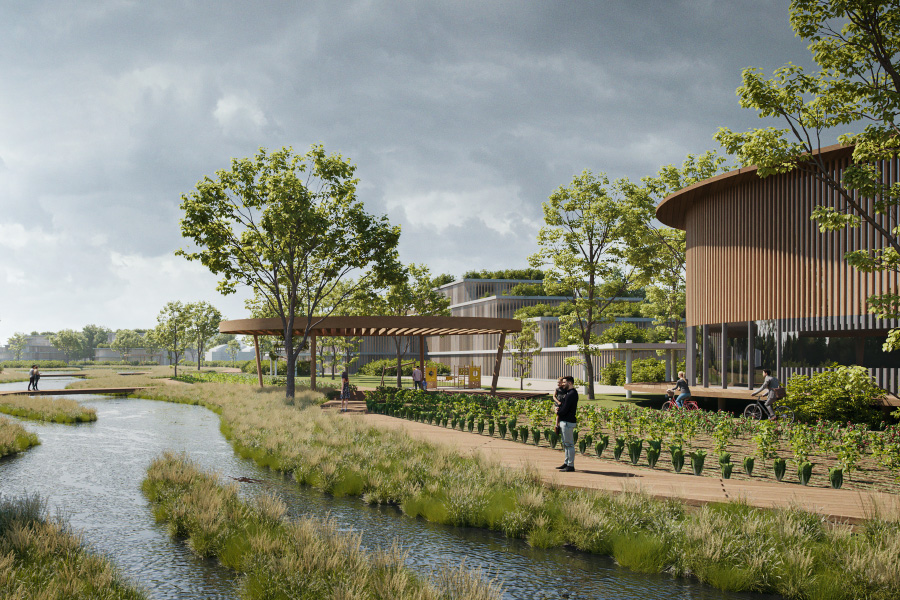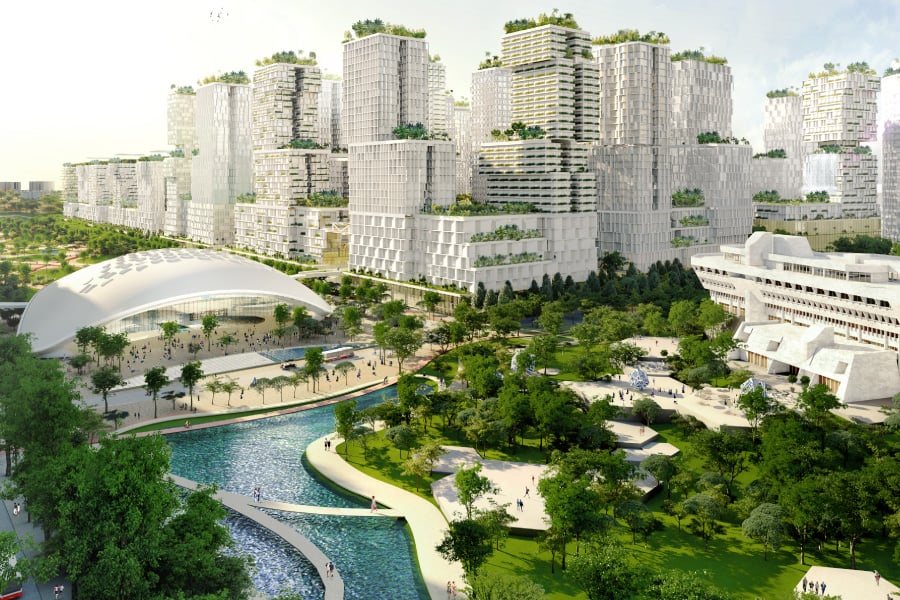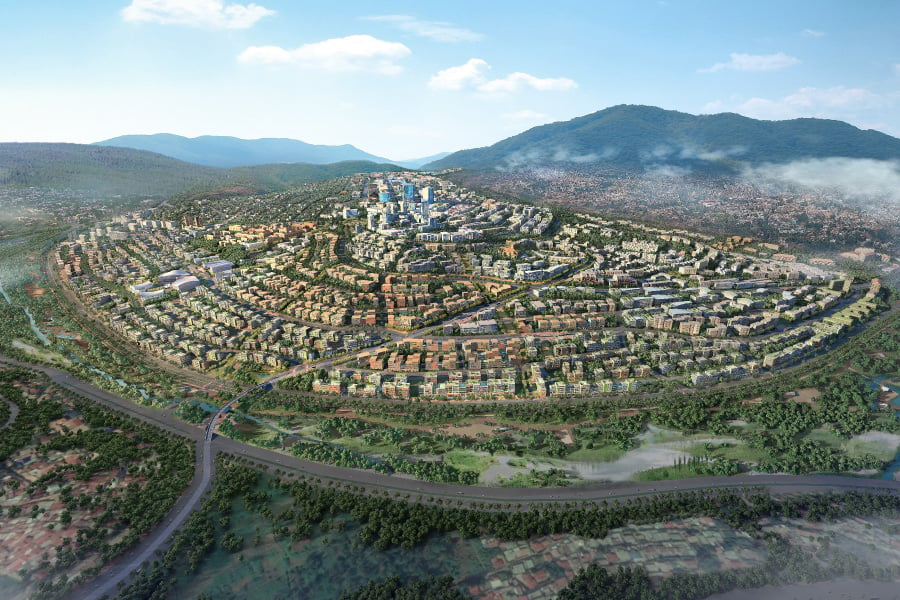Transforming growth mindset into reality
SJ
December 2024
Abstract: After the tragic loss of 800,000 lives in 1994 in a span of 100 days, Rwanda moved forward by empowering its people with pragmatic planning and good governance. The challenge for the newly formed government was to build the country from scratch, ensure cohesion between the ethnic groups, move forward the nation as one, and put Kigali on the world map with a fresh perception. The Master Plan for Kigali City’s first District was commissioned in 2008 driven by a significant opportunity to kickstart the common vision. The Master Plan for the entire city including all 3 districts was prepared in 2013, and Kigali City was envisioned to become a Centre of Urban Excellence in Africa. It established several social, economic, and environmental goals to improve living standards. The District Master Plan was adopted by the City Council as the first legally binding zoning document and a long-term road map for Kigali’s future. After five years of Master Plan execution, Kigali Master Plan 2.0 came as an opportunity to take stock of tested implementation challenges. The reviewed Master Plan embodied extensive public participation making Kigali furthermore inclusive and equitable. All the 3 engagements were undertaken by Surbana Jurong in close collaboration with City of Kigali (CoK) and its stakeholders.
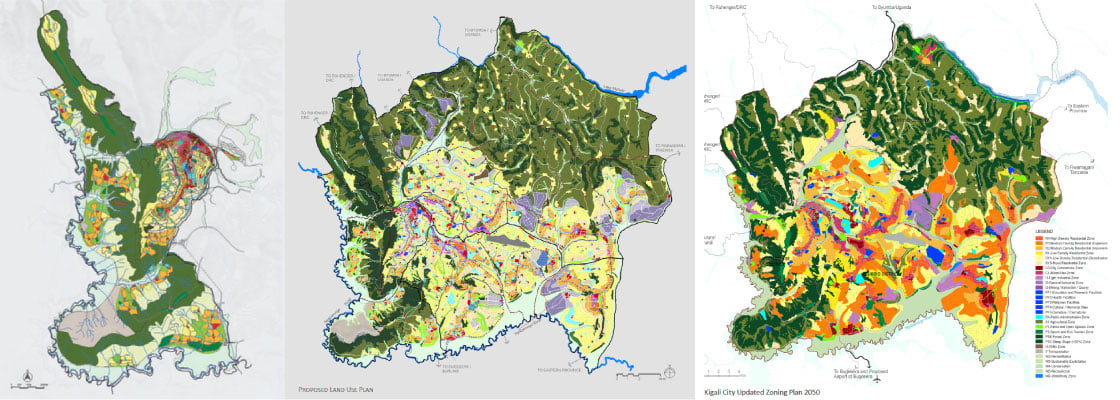
INTRODUCTION
The nation decided to move forward empowering people with pragmatic urban planning and good governance. The government envisioned Rwanda to become a modern and economically strong nation, and a regional leader of development in Africa.
The genocide in Rwanda was the culmination of decades of division. It destroyed not only the human resources and the existing infrastructure but resulted in a compromised global perception of Rwanda and the loss of many economic opportunities in the coming years. The history of genocide, subsequent political stability, and good governance attributed to the growth mindset amongst the Rwandans. The city witnessed extraordinary levels of demographic growth as refugees returned in millions. The increasing population, inadequate planning, and limited institutional capacity needed to be urgently addressed to manage informal settlements and poor social infrastructures in Kigali City. The nation decided to move forward empowering people with pragmatic urban planning and good governance. The government envisioned Rwanda to become a modern and economically strong nation, and a regional leader of development in Africa.
Located in the geographical center of Rwanda, Kigali is the administrative and commercial capital of the country and one of the fastest-growing cities in Africa. Kigali city spreads over an area of around 730 sqkm and comprises of 3 districts – namely Gasabo, Kicukiro, and Nyarugenge. Kigali is rapidly evolving towards a Centre of Urban Excellence in the Region as envisioned and is expected to accommodate a 3.8 million population by 2050.
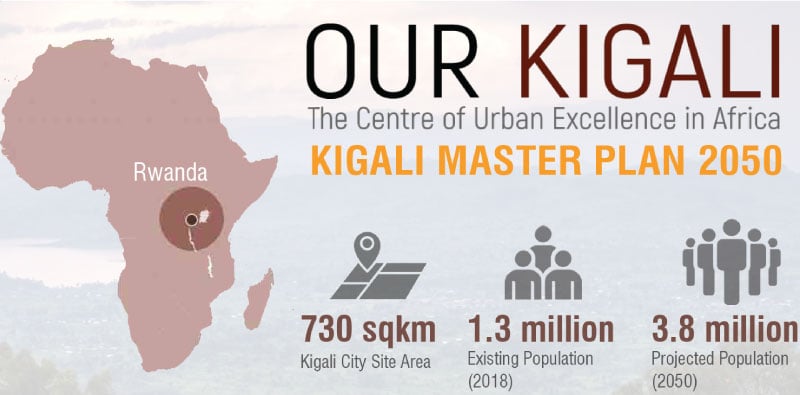
WHAT WAS NEEDED?
An actionable socially inclusive urbanisation plan was needed to heal the wound, embark on the new hope, and improve the lives of all through economic prosperity and social empowerment. The proposed Kigali City Master Plan is not just an urbanisation planning tool to manage the City’s physical growth, but a vision that inspired people to thrive and live a better life; and a comprehensive exercise led by the City of Kigali in partnership with the private sector and the people of Kigali to set the foundations for socially inclusive urbanisation of Kigali City and Rwanda.
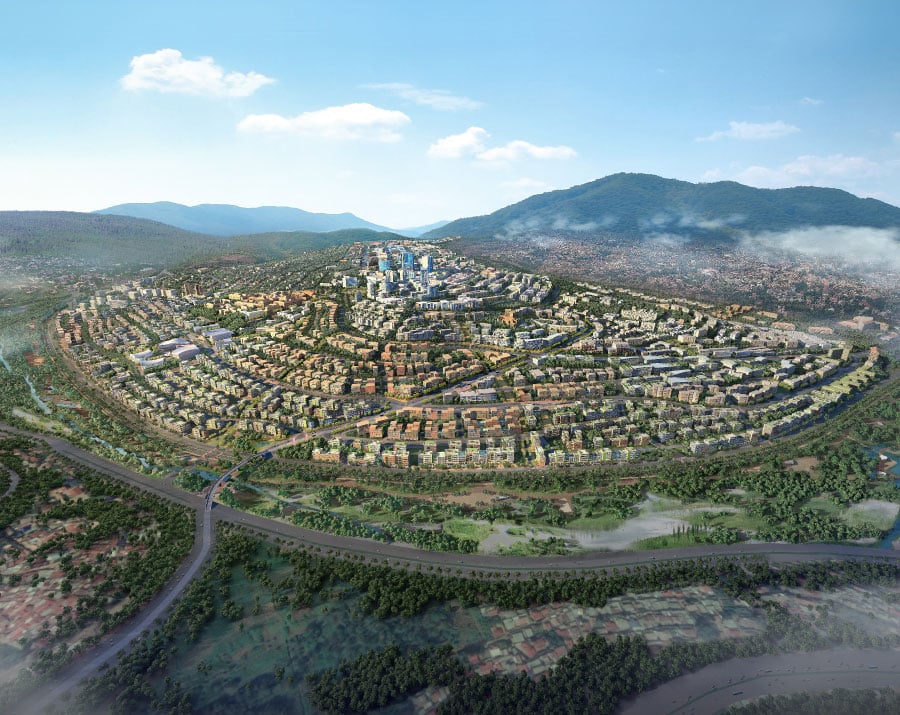
The principal approach of the Master Plan aimed to improve the lives of the residents, involve all stakeholders in the planning process, provide flexible planning tools to the City to enable market friendly investment climate, promote entrepreneurship amongst the locals, and enhance the image of the city at the global level.
An actionable socially inclusive urbanisation plan was needed to heal the wound, embark on the new hope, and improve the lives of all through economic prosperity and social empowerment.
CREATING AN INCLUSIVE URBANISATION & HARMONIOUS SOCIETY
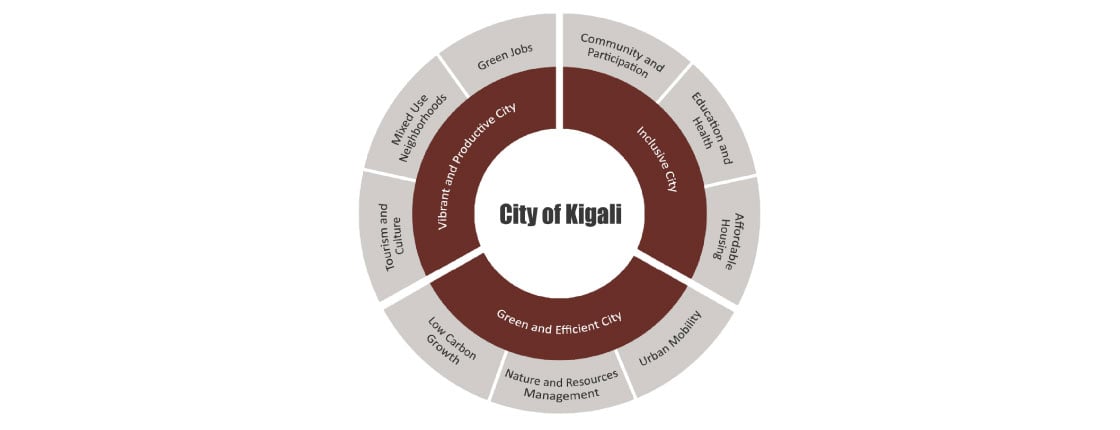
Vibrant Kigali Creating Regional & Local Economic Opportunities
An actionable socially inclusive urbanisation plan was needed to heal the wound, embark on the new hope, and improve the lives of all through economic prosperity and social empowerment. The proposed Kigali City Master Plan is not just an urbanisation planning tool to manage the City’s physical growth, but a vision that inspired people to thrive and live a better life; and a comprehensive exercise led by the City of Kigali in partnership with the private sector and the people of Kigali to set the foundations for socially inclusive urbanisation of Kigali City and Rwanda.
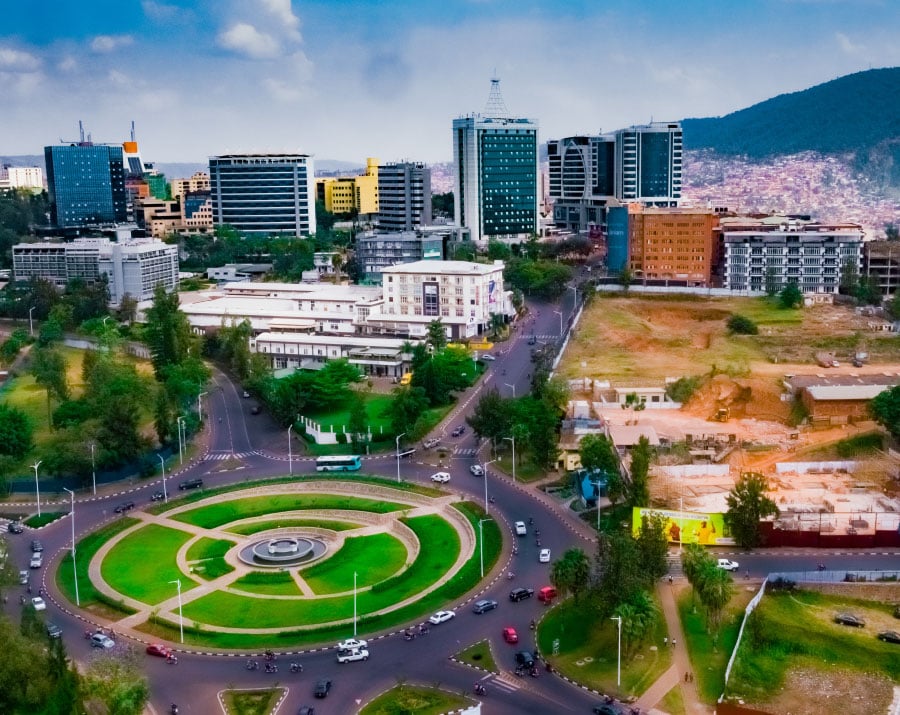
In the last decade, Rwanda has seen an increase in international institutions’ entry into the country creating a demand for offices in the Capital City around key commercial nodes such as Nyarugenge CBD and Kimihurura. An increase in Foreign Direct Investment (FDI) and infrastructure upgrades have also attracted international retail brands to Kigali City. Kigali Convention Center (KCC) became the first and largest convention centre in the region hosting global/regional events and triggering further investments in the hospitality sector including improvements to the international airport, national airlines fleet, hotels, and supporting industries.
Established in 2015, Kigali Special Economic Zone (KSEZ) was built on 276 ha of serviced land equipped with key infrastructures such as a road network, water supply, electricity supply, firefighting system, surface drainage, sewerage plant, that has attracted over USD 2 billion in investments and generated several local employments. Entering the new era of technology, today KSEZ accommodates the Kigali Innovation City (KIC), facilitating Rwanda’s vision to become a Pan-African Hub for technology and innovation. KIC, planned by Surbana Jurong and launched in 2021, currently houses Carnegie Mellon University Africa as the anchor development and has already attracted several other universities related to Biomedical Engineering and Mathematical Sciences.
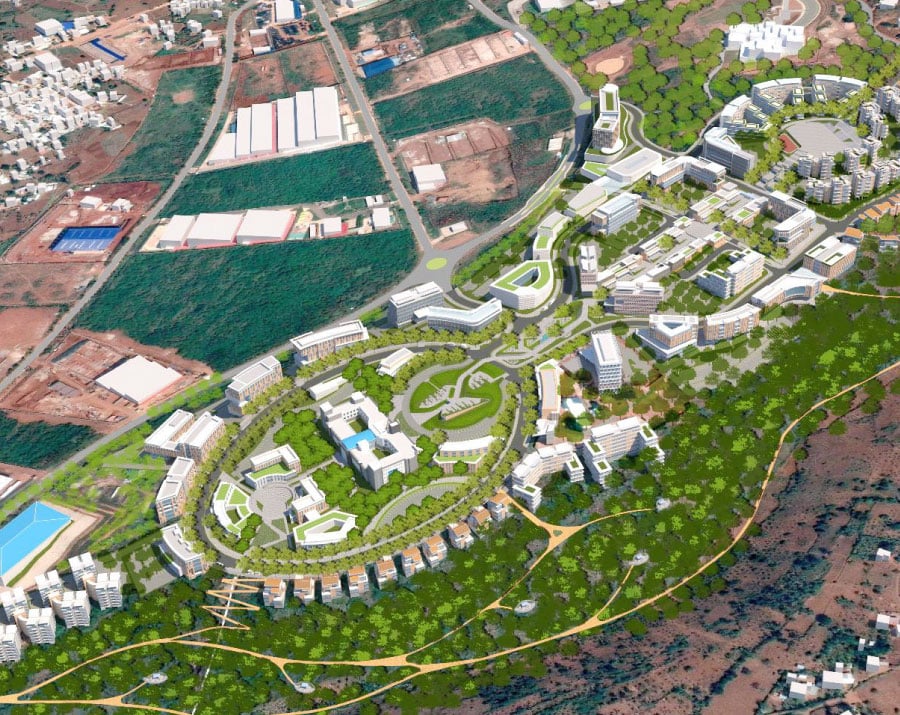
Kigali Innovation City 2030
Kigali City Master Plan 2.0 not only emphasised Kigali’s positioning to become the Regional Financial Hub creating economic and employment opportunities in the region but further enhanced the Local Economic Opportunities by integrating and instituting mixed-uses for small and medium enterprises throughout the City via the adopted Zoning Document.
The economic development was supported by new and improved infrastructure, local entrepreneurship, digitalisation, governance, and capacity building. Continued training of government officials in urban planning and management during the Master Plan process, together with the formation of a One-Stop Centre, GIS Database, and Master Plan Online, subsequently guiding the E-Building Permit Management System has been instrumental in improving the local urban governance to effectively manage the Master Plan.
Inclusive Planning through Collaborative Governance & Stakeholders Participation
While the rapid urbanisation and higher economic growth provided many opportunities including expansion of trade and investments with better services and infrastructure; the prevailing socio-economic and environmental issues including the perceived top-down approach remained a key challenge. Kigali Master Plan 2.0 devised a detailed and structured public participation and communication program to establish an official platform for consultation and discussion throughout the planning process. Participation at the grass root level to design city-wide physical planning was implemented with the help of stakeholders and civil society organisations. The Master Plan is exhibited in the city gallery where the public is free to discuss their concerns and ideas. Different channels of public engagement are adopted through In-person Meetings, WhatsApp groups, and social media platforms like Twitter, Facebook, Television, and Radio Programmes. Scheduled mandatory programmes like Umuganda, city council meetings, and talk to the mayor session, including visits by mayors, village heads, and senior authorities to respective sectors/cells/villages boosted the planning outreach.
The stakeholders’ voices included the need for open public spaces, low-density residential, alignment of affordable housing to realistic socio-economic conditions, improvements to informal settlements, city vibrancy and attractions for tourists, inter-institutional coordination, improvements in public transport and infrastructure, and monitoring of Master Plan implementation. Diverse platforms were used to discuss, generate awareness, and come to a common consensus on these key aspects.
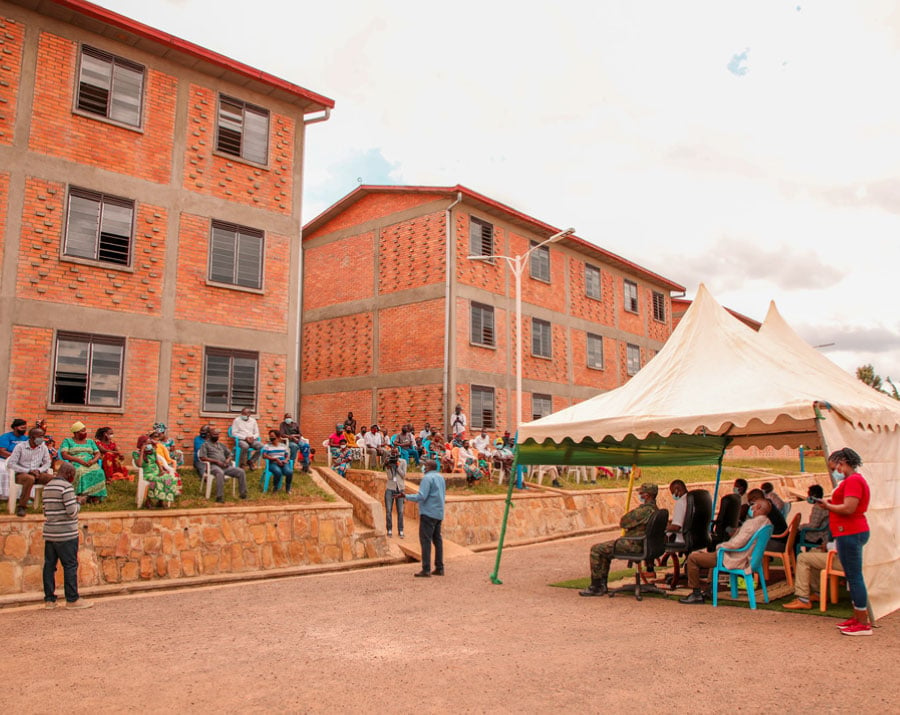
Considering the majority of the city’s residents lived in unplanned settlements; housing affordability remained one of the most pressing concerns. These places lacked urban infrastructure, amenities, and public open spaces in overcrowded informal settlements. This acute shortage of affordable housing is a major deterrent to socially inclusive development for the future of Kigali. The Zoning Plan integrated residential guidelines such as reduced areas for low-rise single-family housing, allowed smaller plot typologies providing flexible incremental development possibilities, and promoted compact density mixed-use inclusive neighborhoods aligned to housing affordability. It also catered for the intensification and upgradation of unplanned settlements requiring good accessibility to neighborhood facilities. The City of Kigali has been developing several infrastructure projects to improve services and public transport in the city.
While the vision is driven by strong economic empowerment, Kigali City Master Plan is also aimed at building An Inclusive City by instituting affordable housing and work spaces into the policy framework and planning for accessible basic transport and infrastructure services to support the envisioned socio-economic growth.
Nurturing the Environment, Managing Urban Risks, and Improving Public Realm
Kigali City is vulnerable to the encroachment of forest, wetland, and steep slopes; and is subjected to risks from floods and landslides. Master Plan integrated environment-sensitive areas as the policy guideline and imposed development restrictions for these zones ensuring resiliency and management of disaster risks. The city is in continuous efforts to restore the encroached wetlands. In addition, there is an ongoing government programme to relocate vulnerable households exposed to the risks of living close to wetlands. Balancing green and sustainable development against rapid urbanisation and demand for land, Kigali City Master Plan targeted Net-Zero-Loss of land under natural uses and ambitiously aimed to become A Clean and Green City. The city aims for low carbon growth reducing greenhouse gas emission promoting renewable energy, waste reduction, sustainable transport, and green building initiatives as part of its planning framework.
Balancing green and sustainable development against rapid urbanisation and demand for land, Kigali City Master Plan targeted Net-Zero-Loss of land under natural uses and ambitiously aimed to become A Clean and Green City.
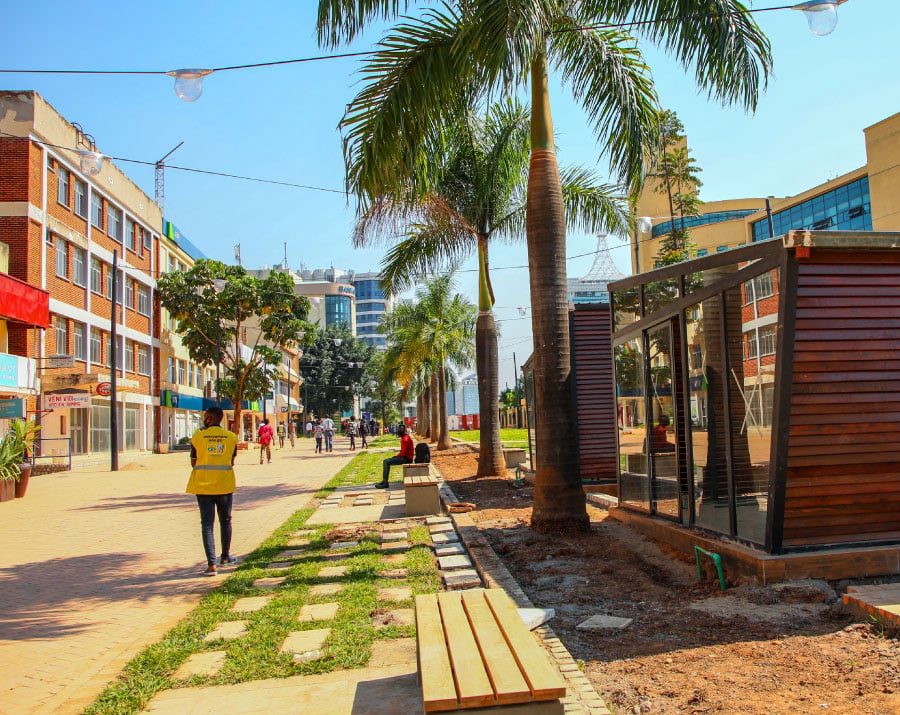
The development of green open spaces for public recreation has also been one of the key priorities for Kigali. New public space projects have been planned in various locations, mostly added to the city’s central commercial nodes where maximum impact can be realised. The city is improving walkability, access, and vibrancy by introducing pedestrian car-free zones such as the Imbuga City Walk project undertaken by Surbana Jurong. This first car-free zone implemented in 2021 was vastly well received by the residents serving as a relief space during the pandemic. New Stadium and existing stadium expansions were also implemented. Kigali Arena became the biggest indoor arena in East Africa built in 2019 hosting international sporting events and concerts. Rwanda emerged as a resilient nation that eventually hosted the entire regular season of the NBA Basketball Africa League 2021. Kigali City Master Plan aimed to make Kigali a Resilient City with the readiness to bounce back from the new norm of unexpected shocks and stresses through a decentralised planning approach and integrated public space developments. Creating endearing public spaces provided opportunities for social healing and became a great relief space during the pandemic.
“The country is upgrading facilities and building a reputation for Covid-secure events in order to attract international tournaments. The end result of all those things is promoting Rwanda as a MICE destination. This means the sports industry is one that can play a significant role in the country’s economic development. Hosting this kind of event is proof we’re moving in the right direction. It brings attention to the country and promotes the visibility of Rwanda and the good image of our country.” - September 2021, Rwanda’s Minister for Sports.
A ROLE MODEL IN THE REGION
Kigali City was ranked second to Mauritius in Africa according to the 2020 World Bank Doing Business Report. The Master Plan integrated the strategies and vision into a spatial plan across multiple urban sectors. The Master Plan became the reference for detailed sectoral plans including regional and local economic development, basic and social infrastructures, and environmental protection and management. Priority implementation projects were selected by the newly established TAG (Technical Advisory Group) constituting stakeholders and representatives from government, private and NGOs, and international funding agencies. The investments were directed to priority and vulnerable areas as these sectoral plans enabled the local authorities to seek relevant funds to improve infrastructure and develop urban upgradation projects. The Master Plan became a tool that changed the perception of the city. The Master Plan inspired citizen-driven projects throughout the city and the country. New policies are created to support the Master Plan targets. The satellite cities and secondary cities took inspiration from Kigali and recently gazette similar Master Plans in Rwanda. Rising from the tragedy of the genocide, Kigali today is one of the best cities to live in Africa with its natural beauty, pleasant climate, and safe and clean environment.
